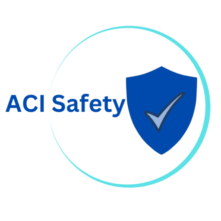I see it all the time. Someone downloads a COSHH assessment template, fills in the blanks with a few generic phrases, and ticks it off the to-do list. Job done, right?
Not quite.
Templates can be brilliant—don’t get me wrong. I even provide one myself. But if you treat them like a shortcut rather than a tool, you’re missing the point. Worse, you might be putting people at risk without even realising it.
So let’s talk about what a COSHH template is, what it isn’t, and how to use one properly without cutting corners.
Templates Aren’t Magic Wands
First things first—there’s no such thing as a one-size-fits-all COSHH assessment. That would be like using the same recipe for a roast dinner and a stir fry. Different ingredients. Different risks. Different outcomes.
A COSHH template gives you a structure. It helps you ask the right questions. But it doesn’t know what you use in your workshop, café, salon, or cleaning business. It doesn’t know if you’ve got a leaky bottle of bleach sitting under the sink next to someone’s lunch.
That’s where you come in.
The Risk of the “Copy and Paste” Job
I’ve seen assessments where someone’s copied a product name from a supplier’s website, chucked in “wear gloves” under controls, and moved on. The problem? The product was a highly flammable solvent, used in a tiny unventilated room—and no one mentioned ventilation. Or ignition sources. Or how to clean up a spill.
That’s not a COSHH assessment. That’s paperwork theatre.
If you’re using a COSHH assessment template, that’s fine. Just make sure you treat it like a framework, not a finished product. Otherwise, you’re just going through the motions.
Start With What You’re Actually Using
Before you even open the template, get clear on what substances you’re assessing. That means:
- Anything with a warning label (hazard symbols)
- Cleaning products
- Paints, adhesives, oils
- Solvents, fuels, compressed gases
- Dusts, fumes, mists, vapours
- Even natural stuff like flour, if it’s used in bulk or creates dust
If you’re not sure what counts, this post on what COSHH covers will help you out.
Once you’ve got your list, then you can start plugging info into the template.
Customise Like You Mean It
Here’s where most people go wrong—they leave the template looking like a template.
You need to tailor each section to your actual setup. For example:
- Substance name: Be specific. “Cleaning spray” is vague. “XYZ Heavy Duty Surface Cleaner” is better.
- Hazards: Use the Safety Data Sheet (SDS) for clues, but translate it into plain English. “Irritant to skin and eyes” is helpful. “May cause serious burns on contact” is more serious, and people should know that.
- Who’s exposed: Not just “employees”. Name the job roles. “Delivery drivers when unloading drums” or “kitchen staff using descaler weekly”.
- Control measures: Don’t just write “PPE”. Spell it out. “Wear nitrile gloves, splash goggles, and apron when diluting.”
- Storage: Where exactly does it live? High shelf in the cleaning cupboard? Locked COSHH cabinet?
- Spill procedures: Don’t copy and paste from the SDS. Write what you would actually do in your workplace.
If you’re stuck, our post on what a COSHH assessment should include is a solid guide.
Think About the Task, Not Just the Product
Another common mistake: treating each COSHH assessment like it only applies to the substance. But COSHH is all about how the substance is used.
Take bleach, for example. Using it to disinfect a toilet once a week is one thing. Mixing it in bulk and using it in a fogging machine? That’s a completely different level of risk.
The same chemical can be low-risk in one scenario and high-risk in another. That’s why your assessment needs to reflect real tasks, not just ingredients.
So ask:
- How is it used?
- How often?
- In what quantity?
- In what kind of space?
- Who’s doing it, and how competent are they?
That kind of thinking is what separates a box-ticker from someone who actually understands COSHH.
Review It. Then Review It Again (When You Need To)
Once it’s filled in, that COSHH assessment isn’t done forever. You’ll need to review it regularly.
When?
- If you change suppliers or switch to a new product
- If the task changes (new equipment, new method)
- If there’s an incident or near miss
- Or just as part of a general annual review
Here’s a post on how often to review COSHH assessments if you want more on that.
Use Templates to Save Time, Not to Skip Steps
I’m not anti-template. Far from it. I build them, I use them, and I recommend them to clients all the time.
If you want a clean, ready-to-use COSHH assessment template that actually works for small businesses—without a load of unnecessary fluff—mine’s available to download. You can fill it out digitally or print it off and go old school. Whatever suits.
But templates aren’t meant to save you from thinking. They’re meant to help you focus your thinking. Done right, they speed things up and make your paperwork easier to manage. Done wrong, they lull you into a false sense of security.
If you’re not confident using a template—or just want a second opinion on one you’ve filled in—I’m happy to help. That’s what the consultancy side of ACI Safety is here for. We can do remote reviews, give feedback, or just give you the tools to do it properly yourself.
If you’re brand new to COSHH, start with this intro guide. It’ll help put the whole thing in context.
And if you’ve already got a dozen assessments sat in a folder and you’re not sure how good they actually are… might be worth a fresh look. Just saying.

